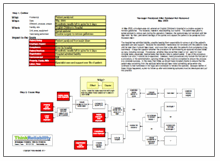By Kim Smiley
At least 16 patients were infected with hepatitis C after receiving treatment at two hospitals in Utah. Additionally, officials have stated that an estimated 7,200 patients may have potentially been exposed to hepatitis C. Investigators are working to determine exactly what happened and to test patients who were potentially exposed.
 Hepatitis C is a blood-borne illness and cannot be spread by casual contact, including through saliva or sharing food and water. It is not an illness that should typically be at risk of transmission from healthcare professional to patient. A nurse who tested positive for a rare form of hepatitis C worked at the two hospitals that have each had at least one patient who tested positive for the same rare form of hepatitis C. Officials have not released detailed information on how the hepatitis C outbreak occurred, but there are some suspicious circumstances.
Hepatitis C is a blood-borne illness and cannot be spread by casual contact, including through saliva or sharing food and water. It is not an illness that should typically be at risk of transmission from healthcare professional to patient. A nurse who tested positive for a rare form of hepatitis C worked at the two hospitals that have each had at least one patient who tested positive for the same rare form of hepatitis C. Officials have not released detailed information on how the hepatitis C outbreak occurred, but there are some suspicious circumstances.
The nurse in question was fired in November 2014 after a hospital found evidence that she had diverted medications, which means she was tampering with syringes or other injectable equipment to steal medication. The nurse pled guilty to the offense and her license was suspended in December of 2015.
It can be very difficult to identify medication tampering by medical personnel, but one of the most alarming facets of this case is that the nurse had been reprimanded and fined by a previous employee for similar misbehavior. It seems like it should be possible to identify whether a prospective employee has a history of issues with medication diversion during the hiring process. Investigators have not commented on what type of background checks were done prior to her employment at the second hospital, but it seems like an area where hard questions should be asked.
The immediate risk of this particular nurse exposing more patients has been addressed since she is no longer working at a healthcare facility. The hospitals are offering free testing to anybody who was potentially exposed and are working on a case-by-case basis to determine how to pay for any necessary treatment of those who were infected. No longer-term solutions have been identified yet, but the investigation is still underway so it is not clear if any lessons learned will result in changes to overall work processes.
Click on “Download PDF” to view an initial Cause Map of this incident. A Cause Map visually lays out cause-and-effect relationships and can help identify a wider range of causes that contributed to an issue. Identifying more than a single root cause can promote a wider range of solutions to be considered and can aid in reducing the risk that a problem may reoccur.







 Although rising healthcare costs is a national issue, some of the problems you face at an organization may seem just as insurmountable. What can be done when an issue appears too big to fix?
Although rising healthcare costs is a national issue, some of the problems you face at an organization may seem just as insurmountable. What can be done when an issue appears too big to fix?
